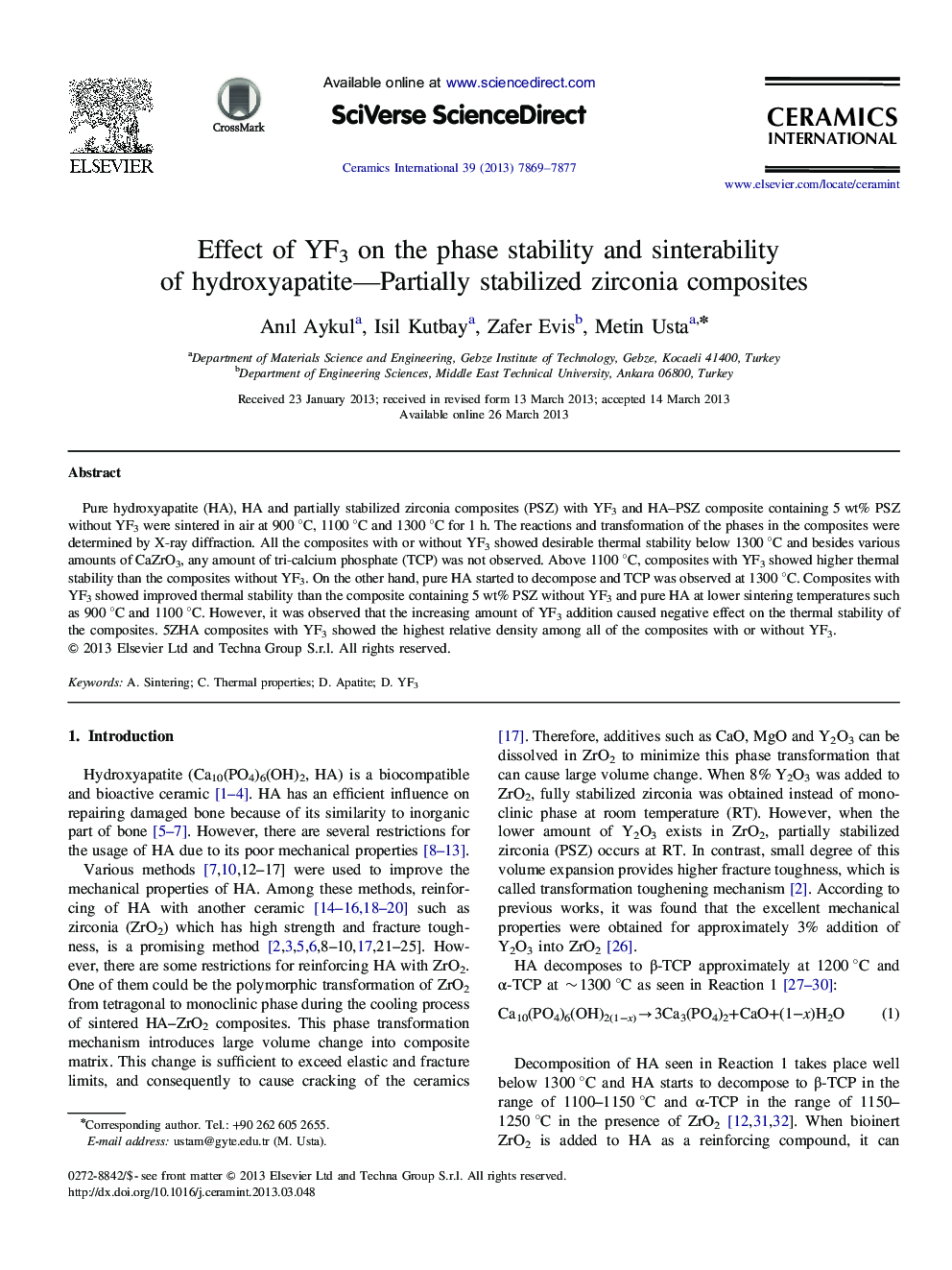| Article ID | Journal | Published Year | Pages | File Type |
|---|---|---|---|---|
| 10625672 | Ceramics International | 2013 | 9 Pages |
Abstract
Pure hydroxyapatite (HA), HA and partially stabilized zirconia composites (PSZ) with YF3 and HA-PSZ composite containing 5 wt% PSZ without YF3 were sintered in air at 900 °C, 1100 °C and 1300 °C for 1 h. The reactions and transformation of the phases in the composites were determined by X-ray diffraction. All the composites with or without YF3 showed desirable thermal stability below 1300 °C and besides various amounts of CaZrO3, any amount of tri-calcium phosphate (TCP) was not observed. Above 1100 °C, composites with YF3 showed higher thermal stability than the composites without YF3. On the other hand, pure HA started to decompose and TCP was observed at 1300 °C. Composites with YF3 showed improved thermal stability than the composite containing 5 wt% PSZ without YF3 and pure HA at lower sintering temperatures such as 900 °C and 1100 °C. However, it was observed that the increasing amount of YF3 addition caused negative effect on the thermal stability of the composites. 5ZHA composites with YF3 showed the highest relative density among all of the composites with or without YF3.
Related Topics
Physical Sciences and Engineering
Materials Science
Ceramics and Composites
Authors
Anıl Aykul, Isil Kutbay, Zafer Evis, Metin Usta,
